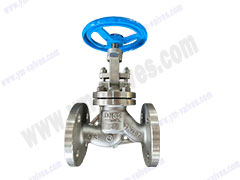-
【Valve Knowledge】Main Functions of Pressure Reducing Valves
-
1. Pressure Regulation and Stabilization
Core Function: Reduces the pressure of inlet high-pressure fluid to the set outlet pressure and maintains pressure stability, preventing pressure fluctuations from affecting system performance.
Application Scenarios:
Industrial Piping Systems: In industries such as chemical, petroleum, and natural gas, ensures that the pressure within pipelines meets equipment or process requirements.
Hydraulic Systems: Controls the input pressure of hydraulic cylinders, motors, and other actuators to prevent overload damage.
Steam Systems: Regulates the steam pressure output from steam boilers to meet the needs of different heat-using equipment.
2. Protecting Equipment and System Safety
Preventing Overpressure Damage: When the system pressure exceeds the set value, the pressure reducing valve automatically opens the pressure relief channel to prevent pipelines, valves, containers, etc., from rupturing or exploding due to overpressure.
Application Scenarios:
Pressure Vessels: Such as boilers, gas storage tanks, etc., to prevent the risk of explosion due to excessive pressure.
Precision Instruments: Protects pressure-sensitive devices such as laboratory equipment and medical instruments.
Fire Protection Systems: Ensures that the pressure of fire hydrants is within a safe range, preventing pipeline rupture.
3. Energy Saving and Optimized Operation
Reduce Energy Waste: By precisely controlling pressure, avoid energy losses caused by high-pressure operation (such as high-pressure gas leakage or over-compression).
Application Scenarios:
Air Compressor Systems: Adjust compressed air pressure to reduce air compressor load and extend equipment life.
Heating Systems: Optimize steam or hot water pressure to reduce heat loss from pipelines.
4. Adapt to Different Operating Conditions
Multi-Stage Pressure Control: Some pressure reducing valves can switch between different outlet pressures by adjusting the spring or piston position to meet diverse process requirements.
Application Scenarios:
Chemical Production: Different reactors in the same production line may require different pressures; pressure reducing valves can be flexibly adjusted.
Laboratory: Provide customized pressure conditions for different experimental equipment.
5. Flow Control Assistance
Indirectly Affect Flow Rate: By adjusting pressure, fluid flow rate can be indirectly controlled (according to Bernoulli's equation, pressure and flow rate are related), but it needs to be used in conjunction with a flow meter or throttling valve.
Application Scenarios:
Irrigation Systems: Adjust water pressure to control the water output from sprinklers.
Gas Supply: Stabilize gas pressure to ensure burner efficiency. 6. Special Media Handling
Adaptable to Different Fluids: For corrosive, high-temperature, or impurity-containing media, pressure reducing valves can utilize special materials (such as stainless steel, Hastelloy) or designs (such as bellows type, diaphragm type) to extend their service life.
Application Scenarios: Chemical Media: Handling corrosive liquids such as acids and alkalis.
Food Industry: Used in sanitary pipelines to prevent media contamination.




.jpg)
.jpg)
.jpg)